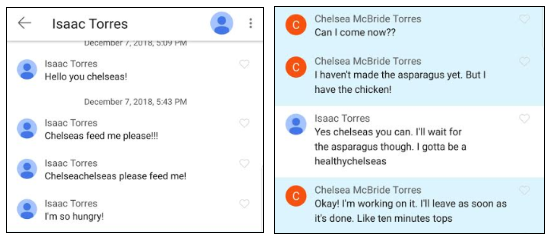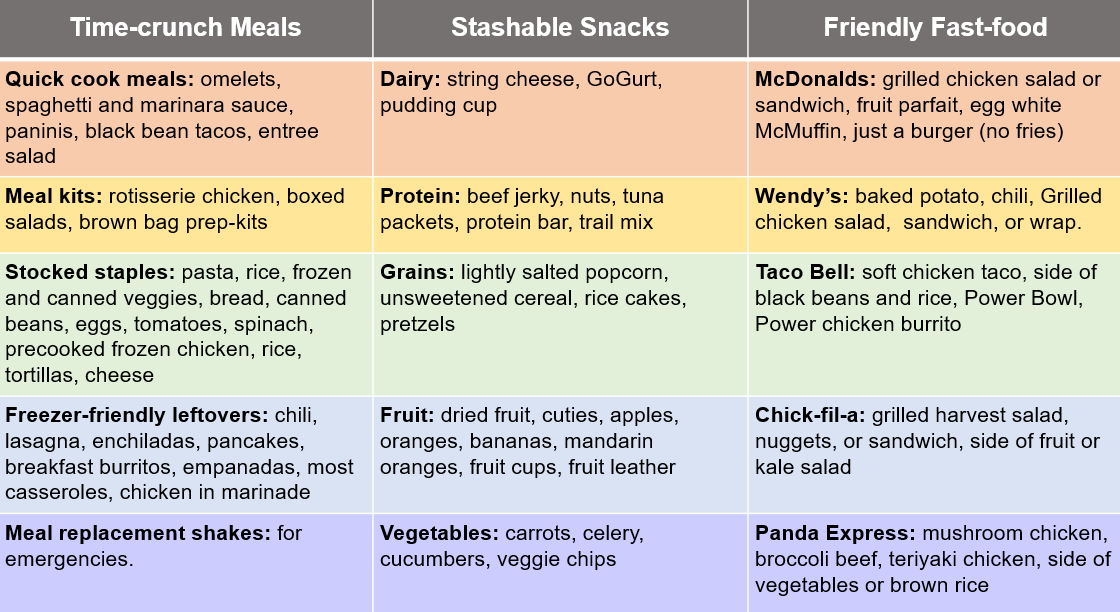Question: what do you do when something unexpected comes up and you have to change your lunch plans at the last second? If you’re like most people you probably a) don’t eat anything or b) eat a convenience food or meal that is high in calories and lacks nutrients.
For those of you who don’t know me, my husband is a Marine and I am also a former member of the Military. As much as we love(d) our jobs in the service they are anything but predictable. Needless to say, we’ve had a lot of practice in dealing with unpredictable schedules.
When unexpected circumstances meet us in our day to day lives, we are forced to reorient our time and energy to focus on the emergency in front of us. We already have too much on our plates so we have to quickly shift gears and re-prioritize our finite resources. Something has to give and for most people diet and nutrition are among the first things that go.
My husband and I usually eat pretty healthy and with me being a “soon to be dietitian”, we have several built in advantages: I love to cook and make healthy meals, we don't have unhealthy snacks in the house, and we pack our lunches everyday. But when something comes up that we aren’t prepared for, we struggle.
The Marines do not work a normal 9-5 day. Sometimes my husband gets stuck at work without dinner until 10 PM. My heart aches for him when I get the “I am sooooo hungry” text. This a a screenshot of my husband, Isaac, pleading for dinner on one of his unexpected 24-hour duty days. When I’m not able to bring him something, those nights turn into vending machine dinners.
It’s not just in the Military, everybody has work schedule changes, gets stuck at the office, or has unexpected deadlines. At those times, you don't think about cooking a healthy dinner. You’ve got more pressing issues to take care of and fires to put out.
And sometimes the circumstance isn't unexpected, but you just forget to fit food into the picture because you had so many other things to think about. These are the times when you get a pit in your stomach as you realize you left your lunch on the counter, you get back from a vacation to find a bare fridge, or your last three eggs you planned to make for dinner mysteriously ended up on your roommate’s plate...again.
We can't always anticipate when these circumstances will happen. But, they DO happen. And for some of us, they happen more often than we’d like. Since we know from past experience that our daily routines will be shook up from time to time, there are some things you can do to ensure that you’re not stuck eating out of a vending machine or being tempted to eat out and in the process make a poor food decision.
Your diet doesn't have to be be compromised. The key is to make a conscious effort to prepare--make the healthy choice the easy choice. Here are some strategies that have worked for me (also check out the table below for more specific ideas):
Have back-up meals that are ready to throw together when you don’t have time to cook or go shopping. We have a few options that we fall back on, depending on how hangry I am. For days when no prep time is available, we have leftover MREs (Military issue camping food) or we pick up a rotisserie chicken from Walmart and microwave frozen broccoli. When, we can last ten minutes without eating, I always have a store of eggs and vegetables to make breakfast-for-dinner or precooked chicken and whole wheat bread for paninis. Alternatively, you could make your own freezer meals from leftovers, get grocery store meal kits, or even drink a meal replacement shake. I remember that my mom used to make huge batches of homemade sandwich pockets that we would take out of the freezer to eat for lunches or the occasional dinner when mom wasn’t around.
Keep healthy snacks stashed in case you get stuck out longer than you plan. Anyone who hangs out with me knows that I am the snack lady. I’ve even been busted several times at sports games and theaters for sneaking snacks in where I’m not supposed to. I always stick an apple, cheerios, or protein bar in my purse before leaving the house.
Fast food does not have to be unhealthy. Search the menus of places that you like for lower calorie options. All chain restaurants are required to have the nutrition information posted, and many have easy-to-use apps. My go-to item is the chili at Wendy’s. To make your trips to fast food places a little healthier, you could eat off the kids menu, just get the entree instead of the whole meal, or choose the grilled instead of fried options.
Here is a table with some additional ideas that you might want to print off and stick to the side of your fridge as a friendly reminder of some of the things you can do to prevent a diet meltdown.
Now, with all that being said, there is no way to anticipate all of the scenarios that life will throw at you, but what I have learned is that being prepared to expect the unexpected and having contingency plans helps me minimize the stress when things do happen.
As I dietitian, I am not going to tell you that having a healthy diet is the #1 priority. I'm going to tell you it is important. There are things that are more important in life. The best thing you can do is be as prepared as you can. If you have to make compromises sometimes, that’s okay. Don’t beat yourself up for it. I've learned that being okay with those compromises is the only way to stay sane. You can’t let the times you do have to make an allowance derail the good habits that you've already established.





